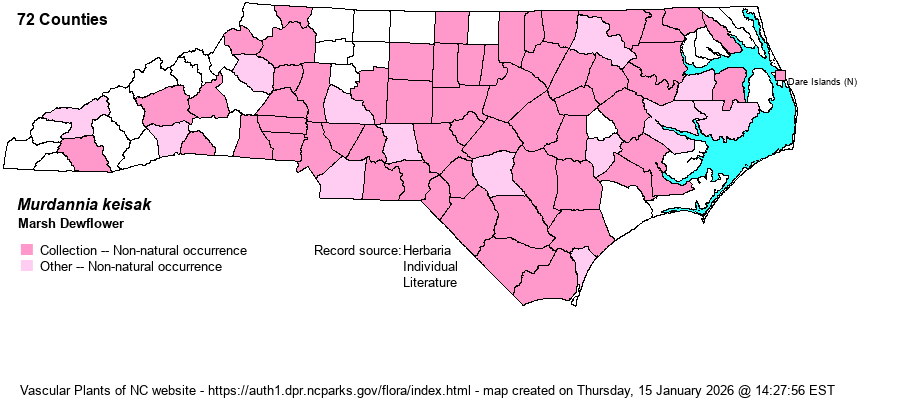| Author | (Hasskarl) Handel-Mazetti | |
| Distribution | Mostly Coastal Plain, Sandhills, and Piedmont; scattered in the Mountains.
Native of Asia; in N.A. in the Southeastern states. | |
| Abundance | Frequent to locally abundant, except rare to uncommon in the Mountains. Individual populations can be enormous and cover the water surface for many square meters. This is a highly invasive species that should be eradicated where it might be impacting rare native species. | |
| Habitat | Impoundments, beaver ponds, slow-moving rivers and streams, back-up channels, maple-gum swamps, roadside marshy wetlands, canals. |
| Phenology | Flowering and fruiting August-October. | |
| Identification | Marsh Dewflower is an annual aquatic with long floating or stranded shoots (several feet long). The ;eaves are well-spaced and lance-shaped. Solitary flowers grow on short stalks from upper leaf axils and also terminal, various shades of pink or lavender, 3 petals. This species looks like a dayflower (Commelina) or spiderwort (Tradescantia) in bloom, with a flower spread about 1/2-inch across. | |
| Taxonomic Comments | Formerly placed in the genus Aneilema.
| |
| Other Common Name(s) | | |
| State Rank | SE | |
| Global Rank | GNR | |
| State Status | | |
| US Status | | |
| USACE-agcp | OBL link |
| USACE-emp | OBL link |

